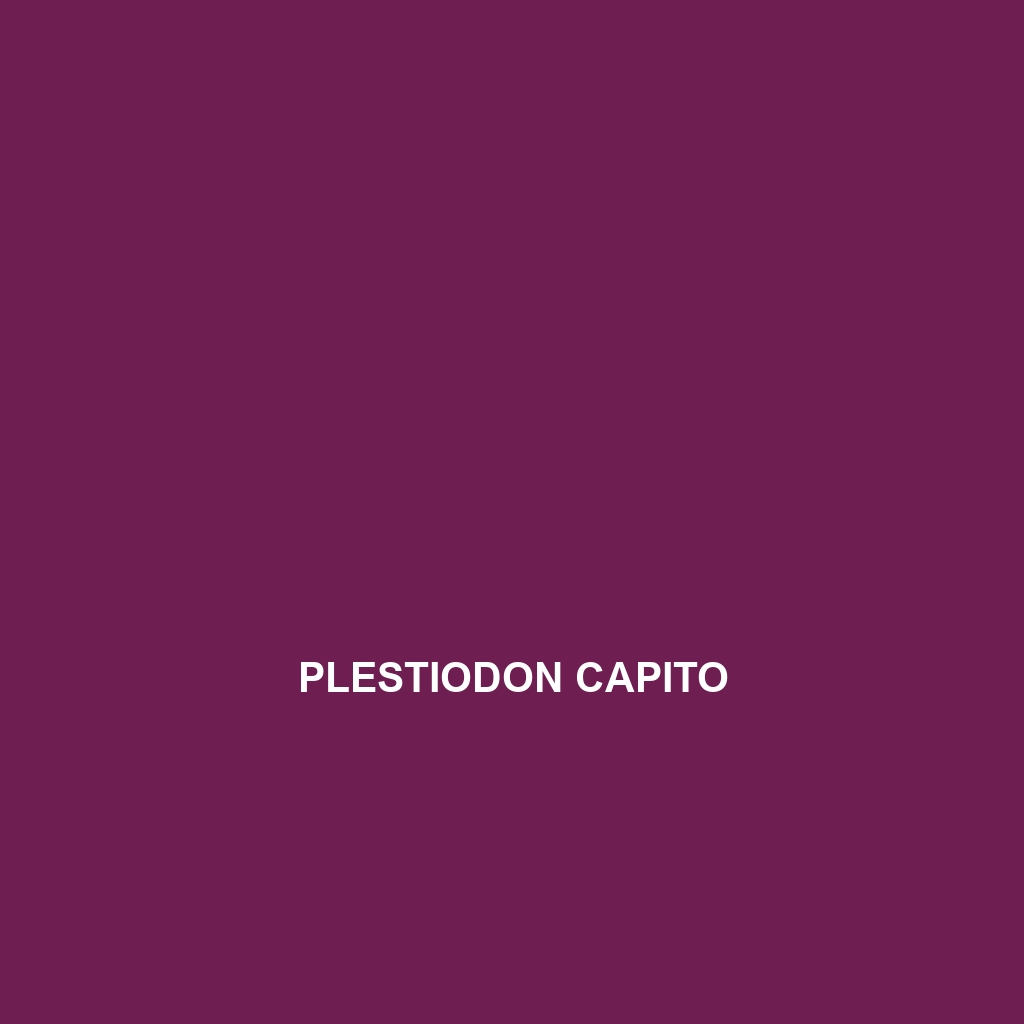Common Name
Plestiodon capito
Scientific Name
Plestiodon capito
Habitat
Plestiodon capito, commonly known as the southern skink, is primarily found in the southeastern United States. This species thrives in a variety of habitats, including temperate forests, wetlands, and grasslands. It prefers areas with ample ground cover, such as leaf litter, and is often spotted in moist environments where it can easily hide from predators. Plestiodon capito is typically seen in regions characterized by humid subtropical climates, which provide the warmth and moisture necessary for this active reptile. Rainforests and savannas may also support populations of this species, but it is the temperate forests that serve as its primary ecological niche.
Physical Characteristics
The southern skink is a medium-sized lizard, measuring between 5 to 8 inches in length, including its tail. Plestiodon capito is recognizable by its smooth, shiny scales which can display a range of colors from olive green to light brown. Notable features include a distinctive blue or gray lateral stripe running along each side of its body, contrasting with a more mottled dorsal coloration that aids in camouflage. This lizard also possesses well-defined limbs and a long, thin tail that may break away when threatened, a common defensive mechanism among skinks. Its eyes are large and alert, indicating its diurnal habits.
Behavior
Plestiodon capito is primarily diurnal, displaying active behavior during the day. These skinks are known for their agility and quick reflexes, making them efficient foragers. While they do not engage in long migrations, they exhibit local movements in search of food and suitable shelter. Socially, they are typically solitary, with males often displaying territorial behavior during the breeding season. Their mating rituals include a series of intricate displays characterized by push-ups and tail waving to attract females and deter rivals.
Diet
The diet of Plestiodon capito is predominantly insectivorous, with a preference for various soft-bodied invertebrates. Common food sources include crickets, ants, beetles, and other small insects. Though primarily insectivorous, they may occasionally consume plant matter such as fruits and flowers, showcasing an opportunistic feeding behavior. This flexible diet helps them thrive in varied environments and adds a layer of ecological interaction within their habitat.
Reproduction
Plestiodon capito typically breeds in the spring, with mating occurring shortly after the lizards emerge from hibernation. The gestation period ranges from 30 to 60 days, culminating in the birth of live young rather than laying eggs—a reproductive trait known as viviparity. A female can give birth to 5 to 10 offspring, which are miniature versions of adults and independent from birth. Parental care is minimal, with adults providing no protection or nurturing to the young once they are born. The young skinks are often vulnerable to predation during their early life stages.
Conservation Status
According to the International Union for Conservation of Nature (IUCN), Plestiodon capito is currently classified as being of Least Concern. However, habitat destruction and fragmentation pose ongoing threats to local populations. Conservation efforts are primarily focused on habitat preservation and restoration, ensuring that the necessary environmental conditions remain intact for their survival. Monitoring populations in key habitats can help mitigate risks to this species’ future.
Interesting Facts
One of the most intriguing factors about Plestiodon capito is its ability to regenerate its tail after losing it to predators. This unique adaptation allows the skink to escape while distracting potential threats. Additionally, these lizards can change color slightly depending on their environment and mood, providing further camouflage against predators. Their unique social behaviors, along with their impressive physical adaptations, make them a fascinating subject for study in the field of herpetology.
Role in Ecosystem
Plestiodon capito plays a significant role in its ecosystem as both a predator and prey species. As insectivores, they help control insect populations, contributing to the overall health of their environment. Their presence in the food web is crucial as they provide nourishment for larger predators such as birds and small mammals. In doing so, they maintain the balance of their ecosystem, showcasing the interconnectedness of species within these dynamic environments.
